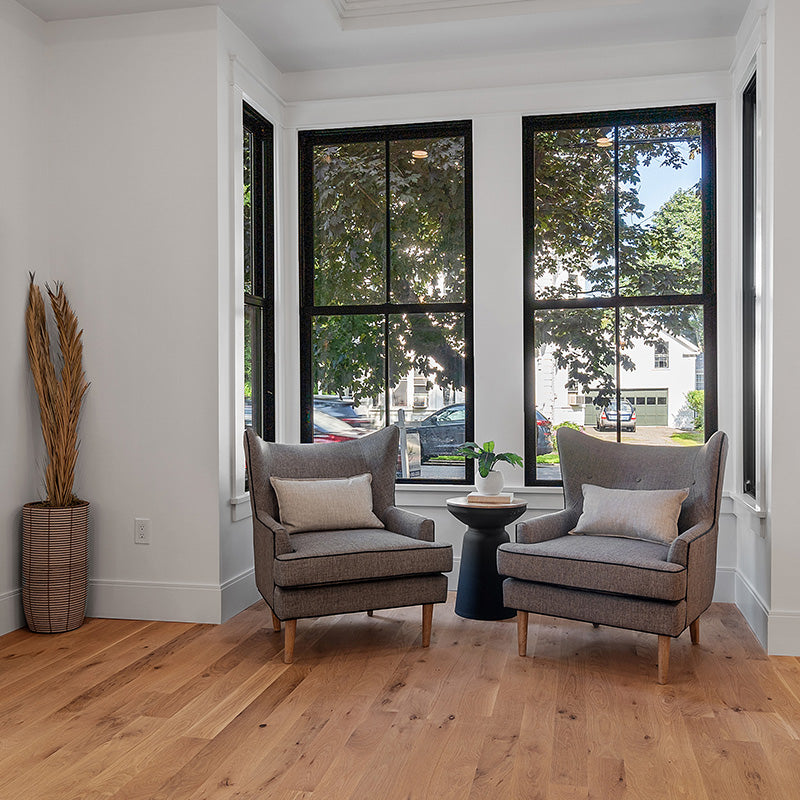Your Cart is Empty
Projects
11 Ways to increase repeats and referrals
February 28, 2013 7 min read
guest post
Effective strategies to increase your company's bottom line.

There is no better way to increase your firm’s bottom line than through a combination of repeat business from existing clients and building a strong list referral candidates.
According to a Dun & Bradstreet survey, referrals reduce sales expenses and the sales cycle; referrals build your cache of satisfied customers; and ultimately referrals will increase your sales revenue.
Professional Remodeler recently spoke with a number of top remodelers across the country to find out their top recommendations to increase repeats and referrals.
1. Communicate Clearly & Set Expectations
From the onset of the project, remodelers should sit down with the client and clearly communicate the expectations for the project. This discussion should examine both the remodeler’s expectations from the client, and the client’s expectations from the remodeler. Furthermore, it is critical the communication should continue throughout the lifespan of the project.
“This is where a lot jobs and clients can go sideways. Through a failure to communicate clearly, effectively, and frequently can result in a customer not coming back for additional work or not referring you for another project,” says Charles H. Gindele, president, Dial One Window Replacement Specialists, Laguna Hills, Calif.
Remodelers must be very honest with the clients and go out of their way to prepare them for what lies ahead.
“We would rather lose a remodeling project than tell a client what they want to hear just to get a job. In being transparent, we set our company up for success by preparing clients for the challenges of remodeling,” says Steve Kendrick, owner, Structures Building Co., Mount Pleasant, S.C.
2. Use Third Party Survey & Feedback Services
One of the tools many remodelers use to monitor existing client relationships is through third-party survey and feedback services such as GuildQuality (www.guildquality.com).
“We use an independent third-party company that sends out a survey to all of our clients whose jobs were just completed. We get real-time, honest feedback as soon as they respond to the survey, and that feedback goes directly to every team member so we can know what areas we excelled in and what areas need improvement,” says Scott Barr, steward, Southwest Exteriors, San Antonio.
Remodelers must determine if they are actually providing a level of customer service to obtain the level of client satisfaction that warrants repeat business and referrals from their clients.
“You need to do everything you can to earn that referral. This includes excellent communication, paperwork, craftsmanship, and taking care to protect their home. Showing you care and respect a client’s time with good communication will earn their business and that of their friends,” says Kendrick.
3. Establish a Clear Process to Make the Most Out of Referrals
What do you do with a referral when it lands on your desk or inbox? Is there are clear process established within your company that explains how to handle a referral?
A critical element to following up on a referral involves time and the initial contact. The more time that passes between the initial referral, the greater the chance you will lose their business. It is also important to understand the relationship between the referral source and the referral. Southwest Exteriors, San Antonio, is currently developing a detailed strategy for referrals.
“We are working on a Southwest Exteriors Referral Engine Blueprint to organize a clear, step-by-step strategy for receiving referrals. This blueprint will be mapped out visually on a wall and explained in detail in Standard Operating Procedure manuals so that it can be duplicated and adopted as a key part of the company culture,” says Barr.
HOW IMPORTANT IS REPEAT AND REFERRAL BUSINESS TO YOUR COMPANY?
“In 2002, repeat and referral business accounted for 85 percent of our projects and 95 percent of our revenue. For 2013, we have reworked our marketing plan to further reduce the expenditure of funds directed toward non-referral lead sources and expanded our spending on referral-focused endeavors.”
Daniel J. Weidmann, president, Weidmann & Associates Inc.
“Repeat and referral business makes up 45 percent of our total revenue, and it drives our Internet presence by having fans provide online reviews to sites such as Google Plus Local and Angie’s List. These lead sources together—repeat, referrals, and the Internet—make up about three-quarters of our total revenue. Repeat and referral business is very important to us.”
Scott Barr, steward, Southwest Exteriors
“Repeat and referral business represents about 40 percent of our business. Because the cost to acquire this business—aside from doing all of the right things and creating a great experience for a customer—is low, it offsets the higher cost to attract customers from other forms of marketing. Without this lower cost of marketing from repeat and referral business, we could not afford to pay the higher cost of attracting all of our business from other marketing means.”
Charles H. Gindele, president, Dial One Window Replacement Specialists
“Repeat and referral business accounts for about 50 percent of our volume.”
Troy Pavelka, design manager/architect, Normandy Design Build Remodeling
“Eighty percent of the projects we work on are referral based, so it’s very important. The best projects are those built on trust with a referral or repeat client, in which the trust has largely been earned. I don’t know of a remodeling company that could survive without a majority of their work being based on referral.”
Steve Kendrick, owner, Structures Building Co., Mount Pleasant, S.C.
4. Commit to Exceed Client Expectations
During the sales process, every remodeling company claims to provide excellent customer service and high quality construction. But the client’s takeaway will be the execution of the customer service—their expectations must be met throughout the project.
“It is the delivery of customer service, and to a level that greatly exceeds the client’s wildest expectations, that creates raving fans and produces repeat and referral business,” says Daniel J. Weidmann, president, Weidmann & Associates Inc., Atlanta.
According to Weidmann, embedded in his firm’s culture is the belief that everything the firm does has to be for the benefit of the client experience—everything and everybody else is secondary.
“Your clients will let you know if you are hitting the mark. If we disappoint a client, it is not because ‘we can’t please everyone’ but because we failed to meet expectations. It is our job to manage those expectations,” says Weidmann.
Clients should be pleased with the entire remodeling process, so much so they want to come back to their remodeler for future projects, and tell friends and family about your business.
“We strive to be totally transparent to meet and exceed our clients’ expectations on their project. This includes using the best products, excellent craftsmanship, and providing the best warranty they’ve ever had from a contractor,” says Barr.
5. Create a Referrals Reward Program
Because people are much more likely to work with a company that’s been recommended to them by a friend or family member, client referrals are extremely valuable. A number of remodelers have created referral rewards programs to acknowledge a client’s recommendation.
For example, Southwest Exteriors started working with a company that helps systemize a total communication package with clients. This includes the addition of a referral rewards program that offers even greater incentive and appreciation for client referrals, according to Barr.
Another example is Dial One Replacement Windows’ Red Carpet Experience, which was introduced in 2011 in an effort to create customers for life.
“We created this initiative to promote our approach to customer service. It begins with a belief that customers are the most important component to a successful business and that we want to create customers for life,” says Gindele.
6. Simply Ask for Feedback from Clients
How often do you ask the client for a referral? What about the other parties whom you came in contact with for the first time during the project? Be sure to give your clients ample time to enjoy their new remodeling project before asking them for a referral.
“After the work is done, the easiest thing to do is call the client, ask how they are doing, how they are enjoying their newly remodeled home, and what they would do differently,” says Kendrick.
Be sure to ask the client if friends, peers, or neighbors have expressed interest in some aspect of remodeling their home.
“We want to give as many people as possible an amazing experience on their remodeling project so throughout each phase of the process, we simply ask our clients if they can think of anyone else they know who would benefit from our remodeling services,” says Barr.
7. Incorporate Feedback to Improve Your Business
It is critical that remodelers react to the feedback they receive from clients. If you can correct or address any of the issues raised by the client from their survey response or in-person interview, it is essential to act upon this information whether or not you believe the objection is reasonable.
“If the issue is not client specific, you can make changes within your company to avoid the issue on future projects,” says Weidmann.
8. Make Your Designers the Face of the Company
For some remodelers, the designer is a primary client contact from the beginning of the project through the end. Eventually, the remodeler/client relationship becomes very personable.
“We keep our designers as the face of the company. We get referrals to designers, not the company in most cases,” says Troy Pavelka, design manager/architect, Normandy Design Build Remodeling, Hinsdale, Ill.
9. Social Media Does Work
Remodelers have a love/hate relationship with social media. However, the relationship between remodelers and their client via social media has been increasingly positive.
Frequent project updates, specifically with jobsite photos on Facebook, Twitter, and Pinterest is one way to stay in front of the client and their social media network.
“Keeping the projects out there continually with posts, photos, and relevant content keeps on them at top of mind with the client,” says Pavelka.
The social media-client relationship can also be as simple as a click of a mouse.
“At the in-person interview following the project completion, we ask our clients if we can friend them on Facebook so they can stay apprised of what we are doing and share with their friends,” says Weidmann.
10. Assist Non-clients
Non-clients often contact remodelers to request a trade reference or ask a remodeling-related question.
“If someone contacts our office, we try to assist them whether the project they called about is a fit for us or not,” says Weidmann.
Assisting a non-client can often pay big dividends. “We are completing a seven-figure project for a client that was referred to us by someone who we assisted in this fashion but never worked with directly,” says Weidmann.
11. Establish & Maintain Good Client Relationships
Sounds simple enough, but how much time do you spend working on the client relationship? Throughout the project and post-project, it is essential to communicate with clients who matter very much to your business.
“They are not just a customer completing a transaction with us, they truly become part of the Southwest Exteriors family,” says Barr.
For more information call GRAND BANKS 978-281-2421
Leave a comment
Comments will be approved before showing up.
Subscribe Today!
Our goal is to provide you with as much information as possible. Our newsletter is full of tips, inspiration and featured projects. We promise to only send you interesting things and never share your email with anyone else.




